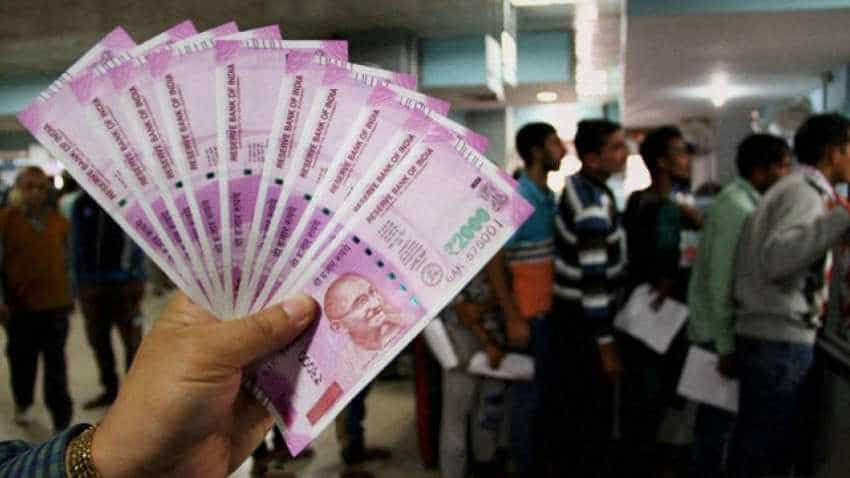Central Government Employees Alert! Hurry up, July 31 nears - Know how to file your HRA, dearness allowances in income tax return
Among major allowances for central government employees are HRA and dearness and they should know that the deadline is looming large now.

It’s time for filing Income Tax Return (ITR). With little over 1 month left, one can expect massive rush at Income Tax department portal filing ITR. The due date for filing tax return is set at July 31, 2019 for fiscal year FY19 assessment year 2019-20. Different forms are available for filing ITR depending upon a taxpayer's income. ITR filing is a must and that applies to central government employees as much as it does to private sector employees. Interestingly, almost every key indicator like basic pay, salary, house rent allowance (HRA), and travelling allowances have been modified under new 7th Pay Commission guidelines. Among major allowances for central government employees are HRA and dearness allowance.
House rent allowance (HRA) has been fixed at 24%, 16% and 8% for X, Y, Z cities respectively. HRA not to be less than Rs 5400, Rs 3600 and Rs 1800 for X, Y, Z cities. Earlier it was at 30%, 20% and 10% of minimum pay of Rs 18,000.
Moreover, 7th CPC recommended revision of HRA when Dearness Allowance reaches 50% and 100%, the government has decided to revise rates when DA crosses 25% and 50% respectively.
Both HRA and dearness allowance is taxable irrespective of whether government employees or not. However, the former does have tax exemption given by IT department, while the latter does not have the benefit. But as per the department, tax liability of dearness allowances must be filed in ITR.
For filing HRA and dearness allowances, you will have to opt for form ITR1 as this one is applicable for every salaried individual.
According to Income Tax department, if ITR-1 (Sahaj) or ITR-4 (Sugam) is applicable, exemption of HRA needs not to be reflected in income part. In these forms, salaries which are excluded of all allowances, perquisites and profit in lieu of salary exempt from tax, are required to be disclosed in income details. Also, details of allowances which are not available for exemption, must also be furnished in these forms. Hence, HRA need not be added!
Similar is the case while filing ITR2 and ITR3 forms. However, HRA exemptions must be shown in the column of allowances to meet expenditure on house rent. These are to be shown under section 10 of these forms as well.
Under section 10(13A) of Income Tax Act, a deduction is permissible for HRA. However, not all amounts are tax exempted under this category. HRA cannot be more than 50% of your basic salary. Tax claims under HRA is available to those whose actual rent paid is less than 10% of their basic salary - 50% of basic salary is for those staying in metro cities and 40% of basic salary for those living in non-metro areas.
According to ClearTax report, here’s how your dearness allowance is calculated.
% of DA = {(Average of the All-India Consumer Price Index (Base year -2001 =100) for the last 12 months -115.76)/115.76} x 100
The report states that, if the employee has been provided with an unfurnished rent-free accommodation, it becomes that part of the salary up to which it forms the retirement benefit salary of the employee, provided that all other pre-conditions are met.
However, while HRA has a fixed section made in ITR forms, the department in regards to dearness allowances ask employees to mention the tax liability separately in the returns that have been filed.
Get Latest Business News, Stock Market Updates and Videos; Check your tax outgo through Income Tax Calculator and save money through our Personal Finance coverage. Check Business Breaking News Live on Zee Business Twitter and Facebook. Subscribe on YouTube.
RECOMMENDED STORIES

Power of Compounding: How long it will take to build Rs 5 crore corpus with Rs 5,000, Rs 10,000 and Rs 15,000 monthly investments?

Small SIP, Big Impact: Rs 1,111 monthly SIP for 40 years, Rs 11,111 for 20 years or Rs 22,222 for 10 years, which do you think works best?
01:35 PM IST










 Centre may decide to increase dearness allowance for central government employees in today's cabinet meeting
Centre may decide to increase dearness allowance for central government employees in today's cabinet meeting  Good news for Central Govt staff: Government announces non-productivity linked ad-hoc bonus — Check amount, eligibility, eligible grades, calculation, full office order
Good news for Central Govt staff: Government announces non-productivity linked ad-hoc bonus — Check amount, eligibility, eligible grades, calculation, full office order Retirement age of Central Government employees to be changed? Here's what Union Minister Jitendra Singh said
Retirement age of Central Government employees to be changed? Here's what Union Minister Jitendra Singh said DA Hike: How much extra central govt employees will get after 3% hike in dearness allowance – check calculation here!
DA Hike: How much extra central govt employees will get after 3% hike in dearness allowance – check calculation here! DA Hike: Good news for central govt employees as clarity on Dearness Allowance rise for 2023 shall come on January 31
DA Hike: Good news for central govt employees as clarity on Dearness Allowance rise for 2023 shall come on January 31